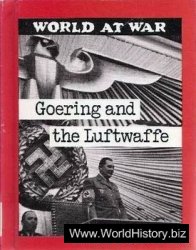Neither General Lee nor General Meade had been present when the fighting began on the first day at Gettysburg. Lee was drawn to the action by the sounds of fire from Heth's division and quickly sent officers forward to determine what was going on. Not having contemplated a full engagement while his army was still divided, Lee nevertheless realized the he was too heavily engaged to break off the action, so he urged his remaining divisions forward. By the end of the day he had established himself on Seminary Ridge, a strip of high ground backed by woods on the southwest side of the town of Gettysburg. General Ewell's Corps, which had joined the action during the first day, was deployed around to the northeast side of Gettysburg facing Culp's Hill. Part of Hill's II Corps was arrayed along the northernmost segment of Seminary Ridge, and that component of Longstreet's Corps which was already on the battlefield was south of Hill's men. (See Map)
General Meade had arrived late in the evening of the first day of fighting and called his officers together in to assess the situation. With parts of his army and supplies advancing along

The Baltimore Pike from the southeast direction, Meade understood that defending his position on Culp's Hill was crucial. By the next morning General Slocum's XII Corps was entrenched on Culp's Hill, with Howard's XI Corps on his left flank and Winfield Scott Hancock's II Corps extending to the South along Cemetery Ridge. On Hancock's left Flank was Daniel Sickles' III Corps.
Having been successful with a double envelopment at Chancel-lorsville, Lee decided to again attack the flanks of the Union Army. But Gettysburg was a different place, and leadership in the Union army had been shaken up in the month since that last battle. Perhaps more important, Stonewall Jackson was no longer Lee's top lieutenant. Lee's instructions to General Ewell were to take Culp's Hill "if practicable," the sort of command Jackson would have taken as leaving no room for doubt. Ewell threatened the Culp's Hill position, coming within yards of the Union supply train, but he never broke through.
On the south end of the battlefield, General Longstreet was directed to advance on the left flank of the Union line on the southern portion of Cemetery Ridge. A crucial piece of ground, Little Round Top, was unoccupied for most of the day, but Longstreet felt that a move around to the rear of the Union line behind Round Top and Little Round Top would be more effective. The details of the fighting on the second day are readily available from multiple sources. Suffice it to say that neither Ewell nor Longstreet accomplished what General Lee had in mind. Most critical for the outcome of the battle, a Union officer had discovered that the high ground on Little Round Top was uncovered, and quickly dispatched Union troops to protect it. The famous 20th Maine regiment under Colonel Joshua Chamberlain held off attacks from three Alabama regiments. At the end of the day the Union line stretched from Culp's hill to Little Round Top, with its seven corps arrayed in the famous fishhook formation. The three Corps of Lee's army were arrayed from the northwest facing Culp's Hill to the south along Seminary Ridge facing the Union line across a mile or so of open ground.




 World History
World History









